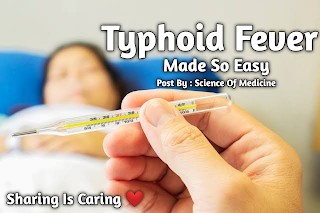Medical Mnemonics: Unlocking the Power of Memory in Medicine
Mnemonics: Unlocking the Power of Memory in Medicine
Memory is a critical skill for medical professionals, who must recall vast amounts of information under high-pressure situations. Medical mnemonics have emerged as valuable tools to help healthcare practitioners retain and retrieve essential knowledge quickly and efficiently. These memory aids, often in the form of acronyms, phrases, or visual cues, are designed to make complex medical concepts easier to remember. By unlocking the power of memory, medical mnemonics enhance learning, improve patient care, and foster confident decision-making in the field of medicine.
Medicine encompasses a wide array of complex topics, ranging from anatomy and physiology to diagnostic criteria and treatment algorithms. Remembering all the necessary details can be a daunting task, especially in high-stress situations. Mnemonics provide a structured approach to memorizing information by simplifying and organizing it into memorable patterns.
One of the most commonly used types of mnemonics in medicine is the acronym. Acronyms are created by taking the first letter of each item to be remembered and forming a word or phrase that is easier to recall. For example, the acronym ABCDE is commonly used to remember the critical steps in assessing trauma patients: Airway, Breathing, Circulation, Disability, and Exposure. By associating these steps with a simple word, medical professionals can quickly run through the mnemonic and ensure they do not miss any crucial actions during patient assessment.
Another effective mnemonic tool is the visualization technique. This method involves creating vivid mental images to associate with medical concepts. For example, to remember the cranial nerves and their functions, the acronym "On Old Olympus' Towering Tops A Finn And German Viewed Some Hops" is often used. Each initial letter represents a cranial nerve and the corresponding function. By visualizing a fictional scene, such as an old man from Finland and Germany looking at hops on top of a towering mountain, medical practitioners can easily recall the functions of each cranial nerve.
Rhymes and songs are also popular mnemonic devices in medicine. Setting medical information to a catchy melody or rhythm can make it more memorable. For instance, medical students often learn the brachial plexus, a network of nerves in the shoulder, using the rhyme "Roots, trunks, divisions, cords; that's how the brachial plexus is stored!" By repeating this simple rhyme, medical professionals can quickly recall the order and organization of the nerves within the brachial plexus.
Medical mnemonics offer several benefits to healthcare professionals. Firstly, they provide a systematic approach to knowledge retention. Mnemonics simplify complex information and enhance recall by organizing it into memorable patterns. This structured approach makes it easier to categorize and retrieve information, particularly during high-pressure situations like emergency scenarios or exams.
Secondly, mnemonics improve efficiency by saving time in the decision-making process. In medicine, quick and accurate decision-making is crucial, as delays or errors can have life-threatening consequences. By using mnemonics, medical professionals can rapidly recall critical information without needing to consult references or rely solely on their memory. This enhances patient care by ensuring timely and appropriate interventions.
Additionally, mnemonics improve long-term retention and memory consolidation. Studies have shown that using mnemonic techniques aids in the transfer of information from short-term memory to long-term memory, making it easier to recall even after longer periods of time. By regularly employing mnemonics during the learning process, medical professionals enhance their ability to retain and recall important medical knowledge over the course of their careers.
However, it is important to note that medical mnemonics are not without limitations. They are only effective if the initial information being memorized is correctly understood. Mnemonics should not be used as a substitute for a thorough understanding of medical concepts but rather as a supplement to aid memory recall. It is also crucial to verify the accuracy and relevance of the information used in mnemonics, as incorrect or outdated content can lead to errors in practice.
In conclusion, medical mnemonics offer a powerful tool for healthcare professionals to enhance memory and improve patient care. By simplifying complex information into memorable patterns, mnemonics help medical professionals retain and recall critical knowledge efficiently. Whether through acronyms, visualizations, rhymes, or songs, medical mnemonics unlock the power of memory, bolstering confidence and decision-making in the field of medicine. However, it is important to use mnemonics judiciously, ensuring a proper understanding of the underlying concepts and verifying the accuracy of the information. With the aid of mnemonics, medical professionals can unlock their full potential and solidify their role as key contributors to the wellbeing of their patients.
𝐊𝐈𝐍𝐃𝐋𝐘 𝐑𝐄𝐀𝐃 𝐓𝐇𝐄 𝐈𝐍𝐒𝐓𝐑𝐔𝐂𝐓𝐈𝐎𝐍𝐒 𝐓𝐎 𝐃𝐎𝐖𝐍𝐋𝐎𝐀𝐃 𝐓𝐇𝐄 𝐅𝐈𝐋𝐄
Click 3 to 4 times on Download Mirror 1 button to download the file........if download doesn't start then comback and click one more time to download the file
if problem still happens then try Mirror 2&3
Keep Loving & Sharing...Your download will start soon ☺️
Admin - Science Of Medicine
Click Here To DOWNLOAD - Mirror 1C
click Here To DOWNLOAD - Mirror 2
Click Here To DOWNLOAD - Mirror 3













.png)


